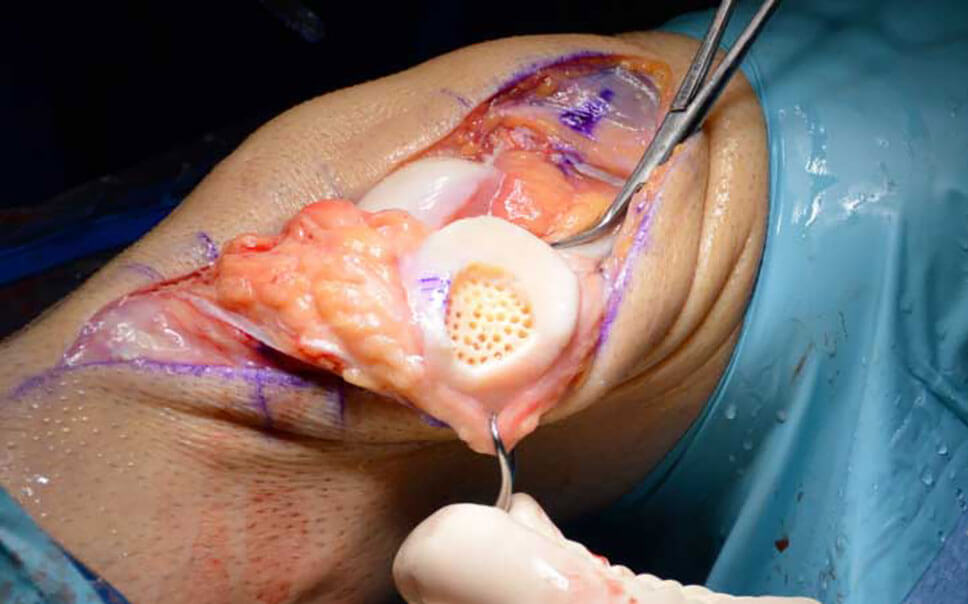“I heard you can grow my cartilage back,” a 54 year old runner said to me the other day. She was talking about her sore knee.
“Well let me tell you about that.” I said.
Cartilage Injuries
There are really four (4) main ways we deal with cartilage injuries these days. Since our cartilage cells do not regrow once we are skeletally mature we need a method of replacing them once we’ve killed them off from injury and/or abuse.
Microfracture Surgery for Cartilage Damage
One method is to stimulate the bone marrow behind or underneath the cartilage by making small holes in the bone, “micro-fracture”. This is a method that’s been around for dozens of years now and the bone marrow stem cells come to the surface and form a fibrin clot that then forms into “hyalin-like” cartilage. This is fibrous cartilage. This is NOT real cartilage and though there are studies to show it makes some people feel better we have more advanced things available these days. Sometimes, however, it is the best thing it offers for small lesions or when a person is not a candidate for something more complicated.
Osteochondral Autograft Transplantation
A second method is to borrow small plugs of cartilage from one less used part of the joint and plug it into the bad spot. Robbing Peter to pay Paul does work for small lesions, say less than a nickel size. You can use if for larger lesions but I personally have found other methods to work better. This is REAL cartilage and it is your own good stuff! This method is called OATS. (osteochondral autograft transfer system).
Stem Cells and Tissue Engineering
The third method is to borrow some little rice bodies of your own cartilage and stimulate them to grow in a dish with nutrients in it. Then in a second surgery, we inject them below a drumskin of tissue on a joint surface and let them grow. They take many months to grow and mature. This is REAL cartilage also, but frequently soft.
Unfortunately, if a little blood gets into that space you’ve made (those stem cells again), you get fibrous cartilage again. There are a lot of studies supporting this method called ACI (autologous cartilage implantation), but a lot of rightful critics also. It seems to work better in younger people with more growth potential. Once we’re able to grow the cells in some type of impermeable matrix this technology is going to take off.
Osteochondral Allograft Transplantation
The last method is large or massive allograft transplantation. This method uses a piece of fresh cartilage from someone else and implants it into you. This is also REAL cartilage, and it works well too! Your own body doesn’t reject the new cartilage because the cells are “hidden” in the cartilage matrix. The nice thing about this method is you’re not robbing Peter to pay Paul and it only takes one surgery and has a very high chance of a good outcome.
A Word of Advice from Dr. Rhyneer
I think probably what is most important is to find a surgeon that does all three or four methods and knows the pros and cons of each. Someone who universally uses one thing for all types of cartilage lesions and thinks that “their” method is the only way I would worry about. I like to say “the emperor has no clothes”. We have a lot to learn still!


